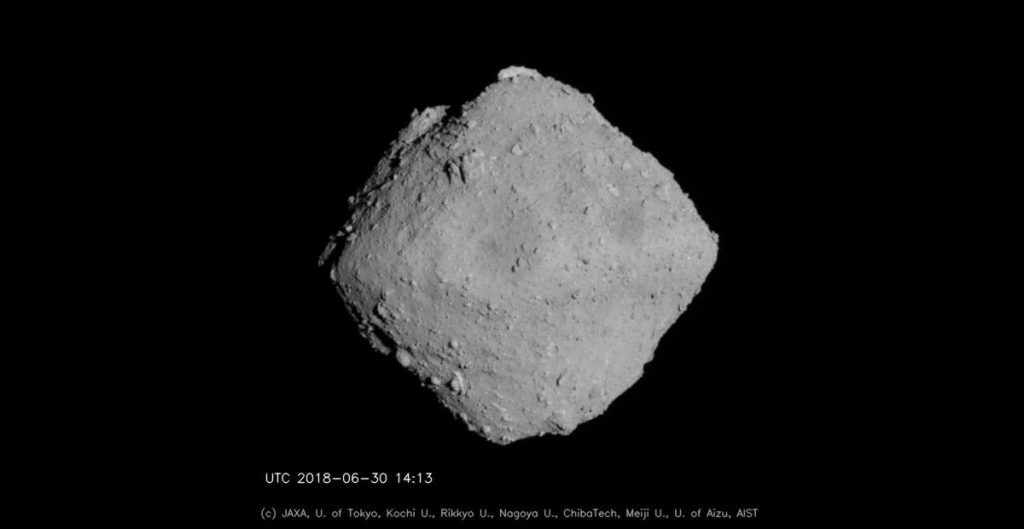Ancient grains of dust that are older than the solar system itself have been found in samples from asteroid Ryugu brought to Earth by the Japanese Hayabusa2 spacecraft nearly two years ago.
The presence of this pre-solar material in Ryugu is not a surprise, as similar ancient grains were previously found in several carbonaceous chondrite meteorites, which are carbon-rich pieces of space rocks that survived the fall through Earth’s atmosphere to land on the planet.
The ancient particles in samples from Ryugu are made of silicon carbide, a chemical compound that doesn’t naturally occur on Earth. According to the researchers behind the new study, there are different kinds of silicon carbide grains that differ by what scientists call their isotopic signatures, or the number of neutrons in the core of the silicon and carbon atoms that make up the compound.
In the Ryugu samples, researchers detected the previously known types of silicon carbide but also an extremely rare form of silicate that is easily destroyed by chemical processes that take place in asteroids. The material was found “in a less-chemically-altered fragment that likely shielded it from such activity,” the researchers said in a statement (opens in new tab).
The study (opens in new tab) was published in the journal Astrophysical Journal Letters on Monday (Aug. 15).
The Japanese Hayabusa2 mission touched down on Ryugu, a near-Earth asteroid that completes one orbit around the sun every 16 months, in July 2019. The probe brought to Earth about one-fifth of an ounce (5 grams) of space dust, which has been analyzed in labs all over the world since its delivery to Earth in December 2020.
In fact, separate research (opens in new tab) published Tuesday (Aug. 16) in the journal Nature Astronomy also analyzes material from Ryugu. The scientists behind that research used a different type of isotopic analysis, as well as a technique called scanning transmission X-ray microscopy, among other studies.
That research found compounds that can’t withstand temperatures above 86 degrees Fahrenheit (30 degrees Celsius), which combined with other findings suggest that Ryugu formed in the outer solar system and migrated in, according to a statement (opens in new tab) from the Japan Aerospace Exploration Agency, which manages the Hayabusa2 mission.
Both studies are examples of work that relies on bringing asteroid samples back to Earth to analyze with terrestrial equipment.
“The opportunity to identify and study these grains in the lab can help us understand the astrophysical phenomena that shaped our solar system, as well as other cosmic objects,” Larry Nittler, a planetary scientist at Arizona State University and a co-author of the silicon carbide study, said in the statement.
Follow Tereza Pultarova on Twitter @TerezaPultarova. Follow us on Twitter @Spacedotcom and on Facebook.

